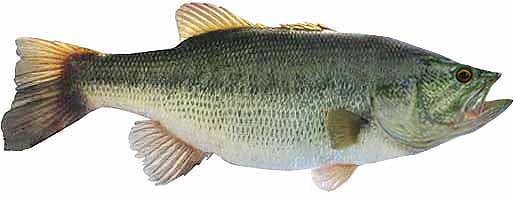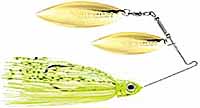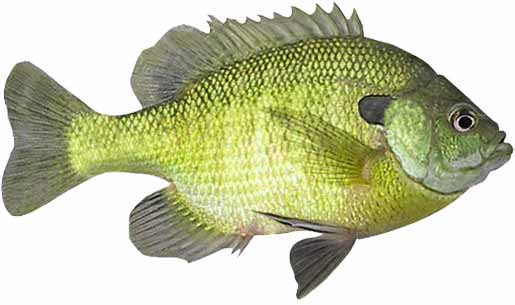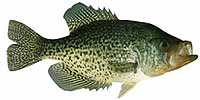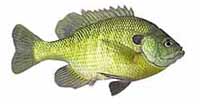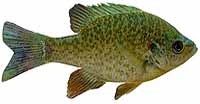Fishing Report For Geist Reservoir, IN
AKA: Geist Lake
By Rick Seaman
Last updated on .

Fishing Reports
Popular Fish Species Geist Reservoir, IN
Largemouth Bass
Current Report: Good To Very Good
Quantity and quality both define the bass fishing at Geist Reservoir, pleasing local bass anglers. Reports from many tournament anglers say it's the best bass lake in the area, if not the entire state.
FALL. Now that Fall has arrived, bass here have moved shallow, following schools of baitfish into coves and shallow bays around 5 to 12 feet of water. Currently topwater, jerkbaits, crankbaits, and slow-rolled spinnerbaits are catching most of the bass. Later in Fall, as deeper water cools, bait and bass move out to ledges, channel edges, points and humps where flutter spoons, jigs and drop shots are often good choices in 8 to 15 feet of water.
WINTER. Winter will isolate largemouth around slightly deeper structure, flats, points and creek channels. They can be found from 10 to 20 feet deep. Here they hold, feeding less frequently, awaiting warmer water to return in Spring. Jigs, worms, drop-shot rigs and spoons are working when bass are off the banks. Slow presentations are key to getting bites. On warmer days, especially during late afternoons, bass may move into 8 to 12 feet of water to feed, particularly around remaining vegetation.
SPRING. Once water temperatures rise into the low 60's, largemouth will move from deep wintering holes, to shallower water nearby spawning areas. Squarebill crankbaits and vibrating jigs are catching plenty of bass when they are shallow. Vibrating jigs, jerkbaits and spinnerbaits also get bites just away from the shoreline. At this time they are feeding aggressively in about 4 to 12 feet of water, and preparing for the spawn. Once water warms into the mid to high 60's, they will move into 2 to 6 feet of water, and create nests, then lay their eggs. Immediately afterwards, females move to deeper water and males remain to guard the eggs, and then the fry. After a couple weeks, the males also move to slightly deeper water. Deep-diving crankbaits, vibrating jigs, plastic worms and swimbaits are catching bass during this period.
SUMMER. Water temperatures will warm considerably in Summer. Bass will feed shallow, early and late in the day, where they will be caught in 8 to 15 feet of water. Square-bill crankbaits, spinnerbaits, and wacky-rigged stick worms are popular baits. Largemouth bass here feed on gizzard shad, threadfin shad, small sunfish and crawfish. During the hotter parts of the day, they are being caught on points, channel edges, and ledges 10 to 20 feet deep.
Channel Catfish
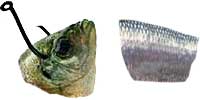

Current Report: Fair To Good
There are plenty of healthy channel catfish residing in Geist Reservoir. Locals report that fishing for channel catfish here is most often best from the Olio Road Bridge, to Luxhaven.
FALL. Fall is one of the better times of year for catching channel catfish. Early in Fall they cruise the 10 to 18 feet deep water, in search of food. Later, in the season they migrate away from the shallows and current, to moderately deep flats and channel edges on the main body of the lake. They can typically be found from 15 to 20 feet deep. Fishing for channel catfish is often productive around any kind of structure. Road beds, creek channels and rocky points are all good places to begin. Drift fishing or slow-trolling baits along mid-depth structure is popular and generally productive. Use a slip sinker or Carolina rig setup. Use cut bait, nightcrawlers, shrimp or prepared baits. They remain in these areas and feed aggressively in preparation for Winter.
WINTER. In Winter, the channel cats gather in deep holes and go virtually dormant, especially if water cools into the 40's. They hole up in pockets, deeper channels, ledges, and the basin areas from 12 to 20 feet deep and await warmer water. Slow presentations, especially cut bait, can still entice strikes. Often during mid day, through the afternoon, anglers are catching them a bit shallower on the same structure.
SPRING. In Spring, when water temperatures rise into the high 40's, channel catfish start their migration into coves and up river. Early in the season, look for them in 6 to 15 feet of water. They hold here, and feed aggressively, around relatively shallow cover until water warms into the mid 70's, at which time they begin the spawn process. Anglers are using slip sinkers, 3-way rigs, or Carolina rigs to get, and keep, the bait close to the bottom. Later in Spring, focus on shallower flats into late evening.
SUMMER. In Summer, slow-moving water, at the river end of the lake may draw catfish to feed. Otherwise they are scattering, locating cover in slightly cooler water. Reports indicate the most successful anglers are using nightcrawlers, cut bait, minnows or shrimp. Most channel cats hold in 10 to 25 feet during the day, and 5 to 12 feet during the night. Fishing from late in the day until midnight produces some of the best results, as this is their prime feeding time.
Bluegill
Current Report: Fair To Good
FALL. Cooling, Fall weather drops the water temperature in the shallows and is luring bluegill into the shallows along the shoreline. Steeper banks in 5 to 10 feet of water, and shallow, weedy areas with drop-offs are drawing bluegill in. Later in Fall, as the shallows get colder, bluegill will move a few feet deeper in the same areas.
WINTER. Cooling shallows have driven the bluegill back to deeper structure with cover, in water ranging from 10 to 15 feet deep. In areas with no cover, anglers are finding them along points and humps with sharp drops into deeper water. When the lake ices over, ice fishing in these areas is producing, but most successful anglers are slowing down their presentation.
SPRING. In early Spring, bluegill migrate from winter holding areas toward the shoreline areas, and are typically caught around 2 to 6 feet deep. As the water warms to the mid 70's they will begin the spawning ritual, building nests in 1 to 3 feet of water. Many of the bigger bluegill prefer to spawn a bit deeper, depending on water clarity. After the spawn, bluegill drop 5 or 8 feet deeper. Small spinners and swimbaits, or jigs tipped with small pieces of nightcrawlers are good choices for catching a lot of bluegill in spring. A hook, line, weight and bobber, with small pieces of worms, also catches lots of bluegill.
SUMMER. Following the spawn, most of the bigger bluegill migrate to deeper water, around 10 to 15 feet deep. Many smaller bluegill will be found around cover, 5 to 10 feet deep. They prefer rocky or weedy areas, often hanging out on steep, rocky banks where they can move up and down to feed without having to travel a great distance. Small spoons, underspins, and mini-crankbaits are catching some of the bigger bluegill. Earthworms are also catching good numbers.
Fishing Video
Fish species to fish for...
Guide to fishing for largemouth bass, channel catfish, flathead catfish, black crappie, walleye, bluegill, redear sunfish and striped bass at Geist Reservoir in Indiana.
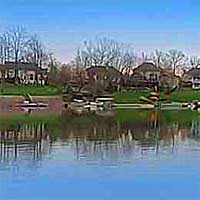 Geist Reservoir is a 1,800 acre lake with over 20 miles of shoreline, on the outskirts of Indianapolis, IN. The lake is surrounded primarily by homes, many with boat docks. This is a popular lake for bass tournaments, and has plenty of fishing for crappie, bluegill, and catfish.
Geist Reservoir is a 1,800 acre lake with over 20 miles of shoreline, on the outskirts of Indianapolis, IN. The lake is surrounded primarily by homes, many with boat docks. This is a popular lake for bass tournaments, and has plenty of fishing for crappie, bluegill, and catfish.
Primary fish species to catch
Click images for fishing tips and details about each species.
Today's Weather & Forecast
Fishing Boat Rentals
Click here for fishing boat rentals.
Marinas
Click here for marinas.
Public Boat Launch Ramps & Landings
Click here for boat ramps.
Fishing License
Click here for a Indiana Fishing License.
Map - Fishing & Access
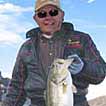 Rick Seaman is a fishing enthusiast with over five decades of fishing experience, a retired tournament fisherman, author of numerous published articles on fishing, and co-author of the book "Bass Fishing - It's not WHAT you throw, It's WHERE you throw it".
Rick Seaman is a fishing enthusiast with over five decades of fishing experience, a retired tournament fisherman, author of numerous published articles on fishing, and co-author of the book "Bass Fishing - It's not WHAT you throw, It's WHERE you throw it".
 Contact Information
Contact Information
Geist Marina
11695 Fall Creek Rd
Indianapolis, IN 46256
317 849-8455
Fishing lakes in each state
102025
Geist Reservoir, Indiana Report
INDIANA


Bass, catfish and striper fishing in central IN.


